
First officially introduced at the end of World War I, shoulder patches were colorful insignia that denoted the unit or service to which a soldier was assigned. Units applied for their own unique designs, and this heraldry also extended to Distinctive Insignia pins as well. By the time WWII arrived, patches were worn to a degree by all branches of the military. WWII-era examples are displayed below.
Distinctive Insignia (DI) pins were developed for each individual unit of the Army and Air Force in WWII. Late in WWII DI pins were popularly worn on lapels of dress uniforms and sometimes caps. Each unit, even today, has its own DI design.
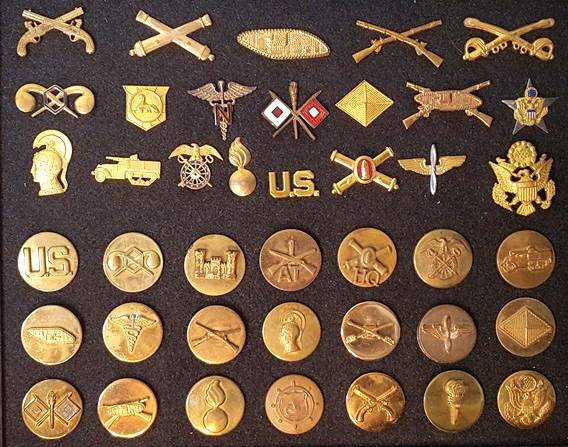
A selection of Officer (top half) and Enlisted (discs) collar branch insignia. These were worn on dress uniform lapels.
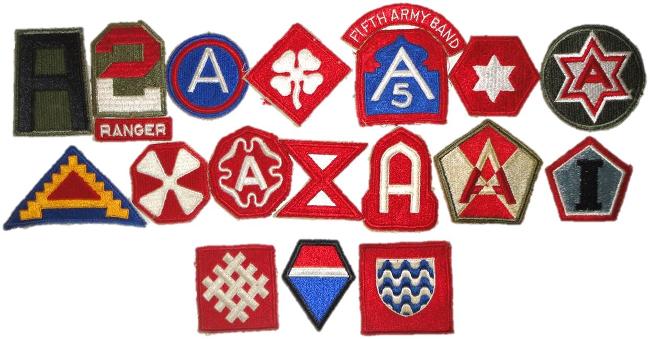
Shoulder patches of the Armies of the United States.
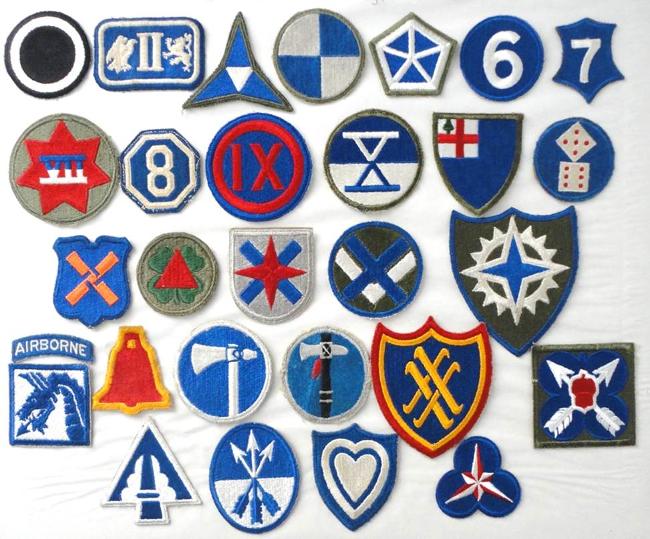
Shoulder patches of the various US Army Corps.

Shoulder patches of US Army Infantry Divisions
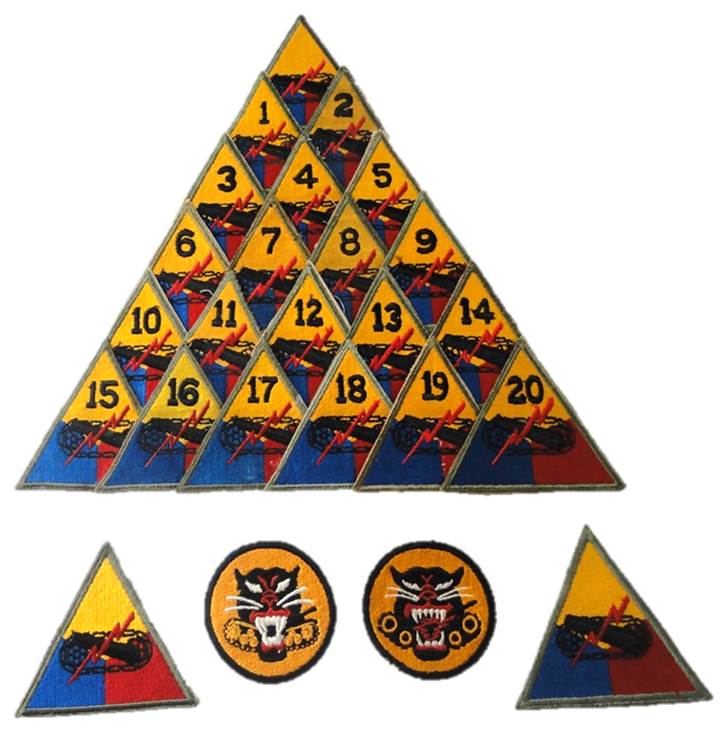
Shoulder patches of Armored Divisions. Tank Destroyer insignia, depicting a panther crushing a tank in its jaws, are at the bottom.

Shoulder patches of various US commands and units of WWII.
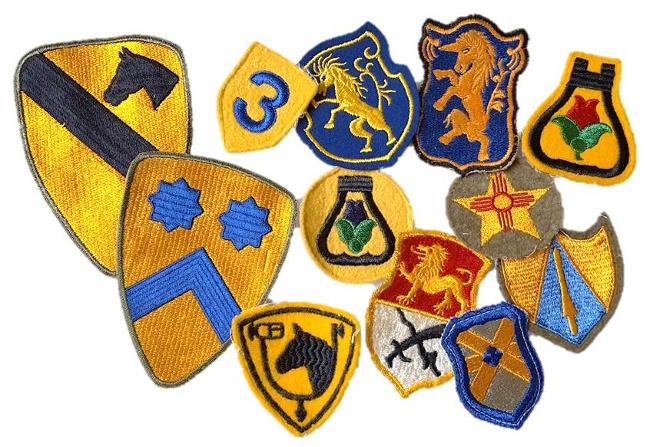
A selection of WWII-era Cavalry patches

Patch for USO entertainers, who traveled to put on performances for troops.
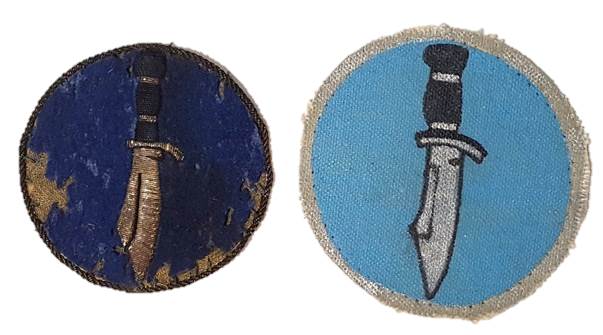
Bullion and printed versions of the Kiska Task Force patch. This force fought the Japanese in Alaska. It is believed that the oil cloth version was worn in the invasion itself.

Patches of war correspondents, who reported the news and took photographs.
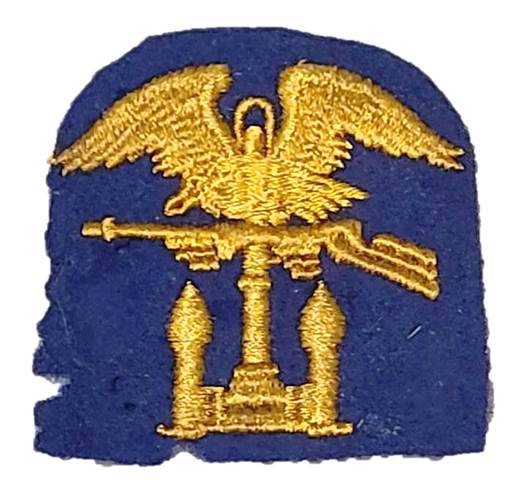
Scarce amphibious engineers patch on felt
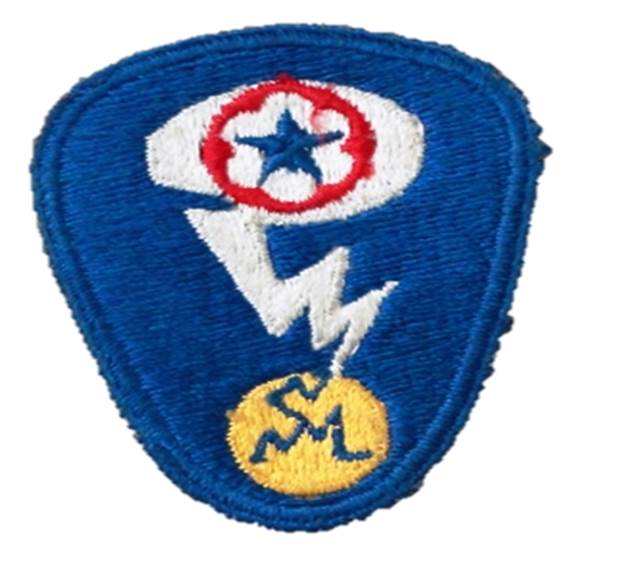
Shoulder patch worn by those serving on the Manhattan Project, which developed the atomic bombs and the US nuclear programs.
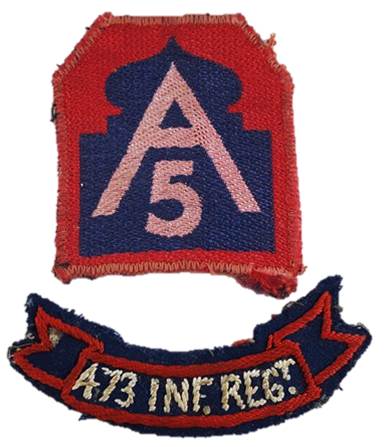
Italian-made 5th Army patch and tab to the 473rd Infantry Regiment. The 473rd was created from anti-aircraft units and deployed as infantry in Italy, fighting with distinction yet with heavy losses.
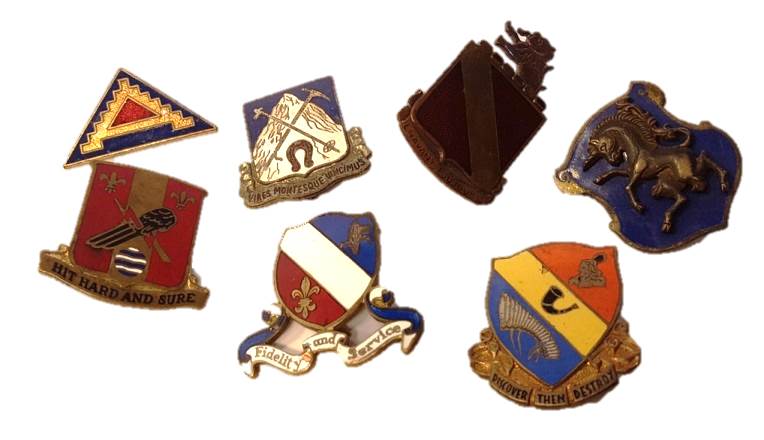
Distinctive Insignia (DI) pins were developed for each individual unit of the Army and Air Force in WWII. Late in WWII DI pins were popularly worn on lapels of dress uniforms and sometimes caps. Each unit, even today, has its own DI design.
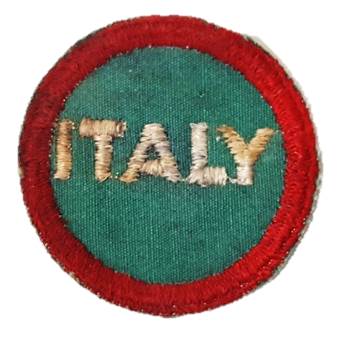
A small cap patch worn by Italian prisoners of war.
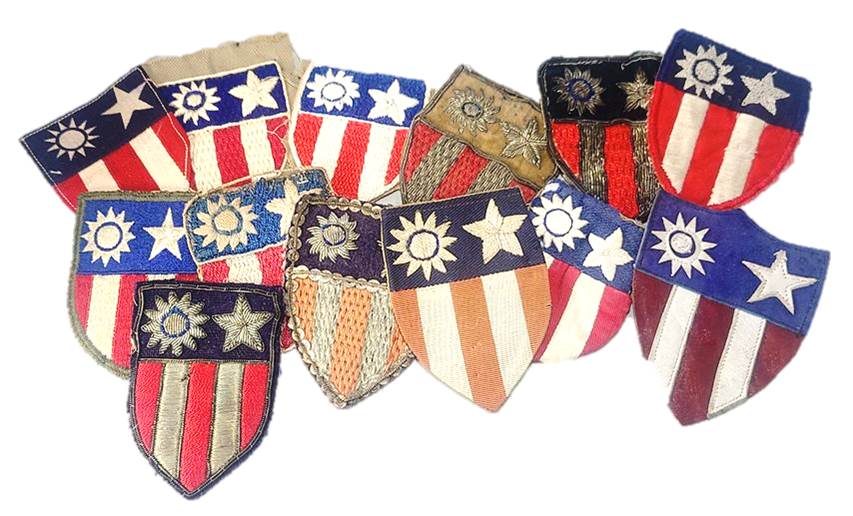
Assorted variations of the China-Burma-India (CBI) patch, most theater-made.
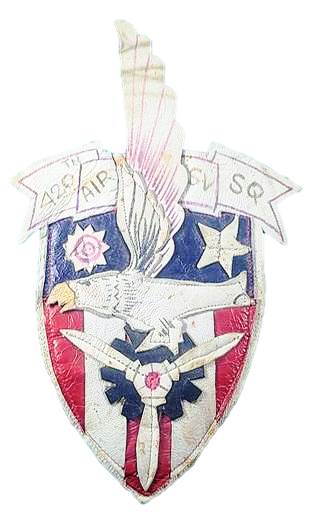
Very scarce 420th Air Service Squadron CBI patch in multi-layer goatskin. This unit was stationed in India from 1944-45.
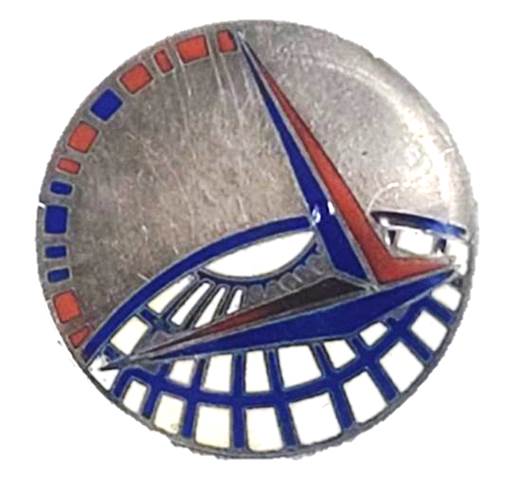
Theater-made Air Corps Air Transport Command DI
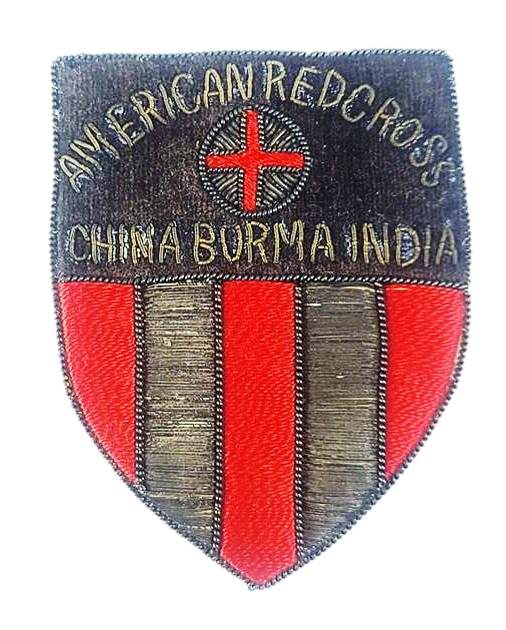
Scarce CBI/American Red Cross patch with bullion construction.
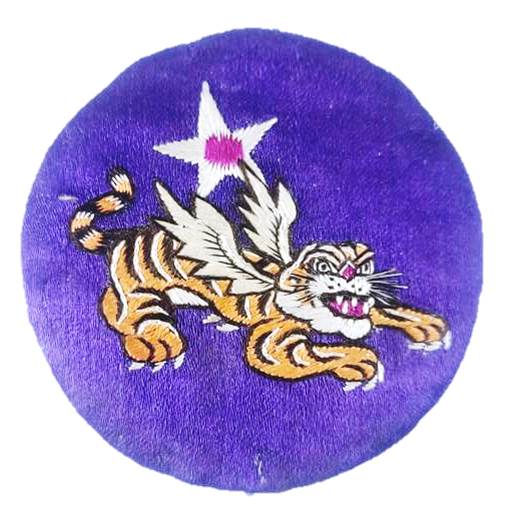
Chinese-made silk 14th Air Force patch

"Ghost" Division patches as used in WWII. These were only units on paper, and created to fool enemy spies into thinking that the allies were building up additional units. In Operation Fortitude and in preparation for the D-Day invasion, they were part of a large deception intended to make the Germans think the allies were going to invade at Pas de Calais instead of Normandy. The examples above are reproductions.